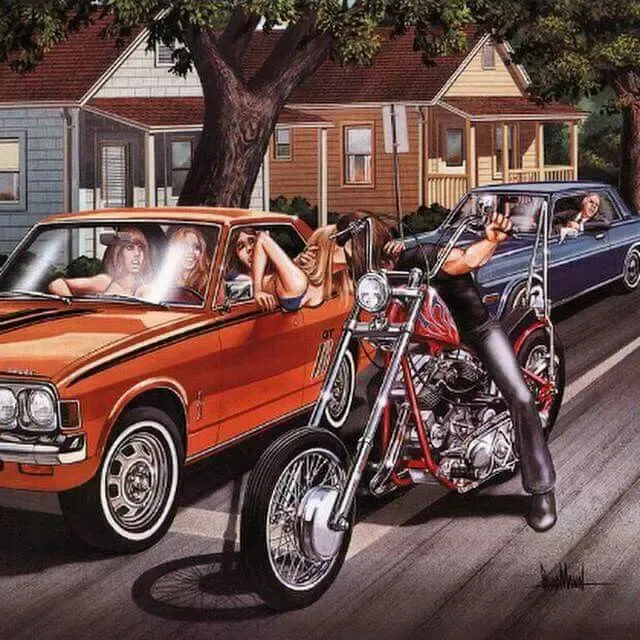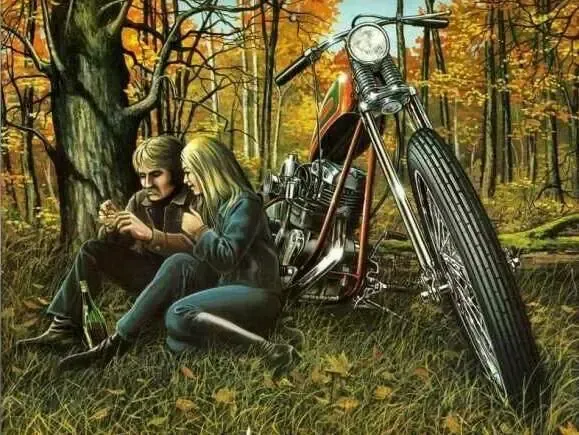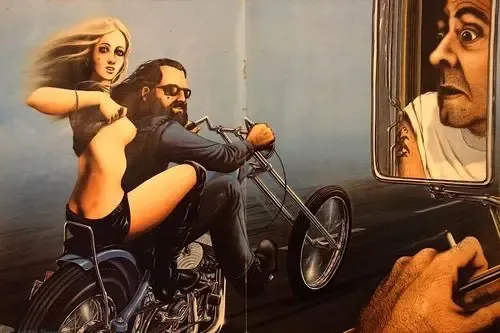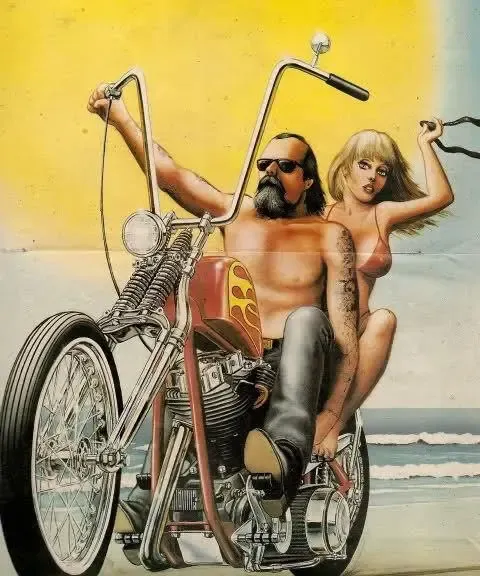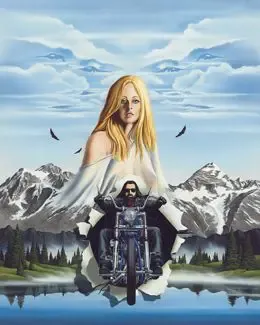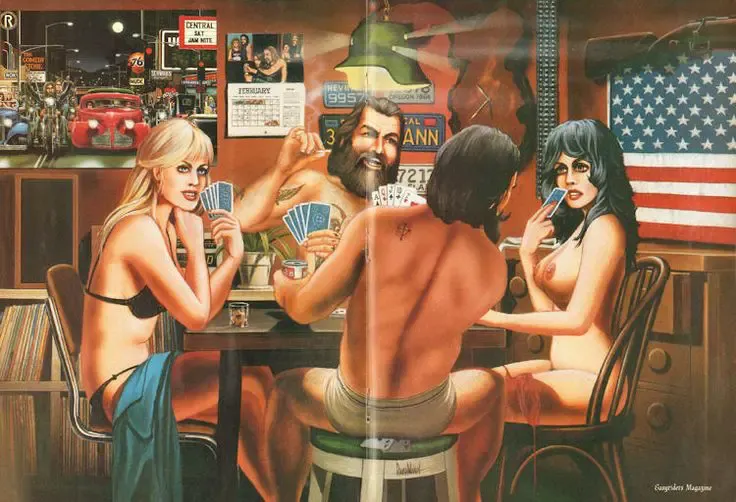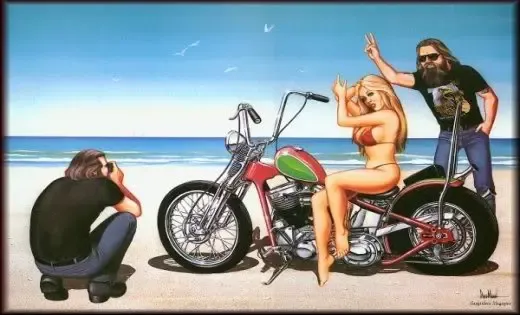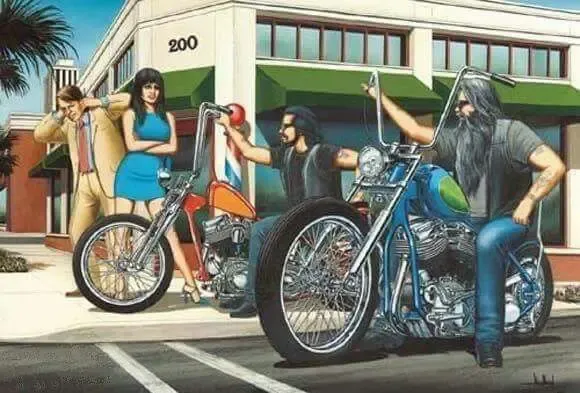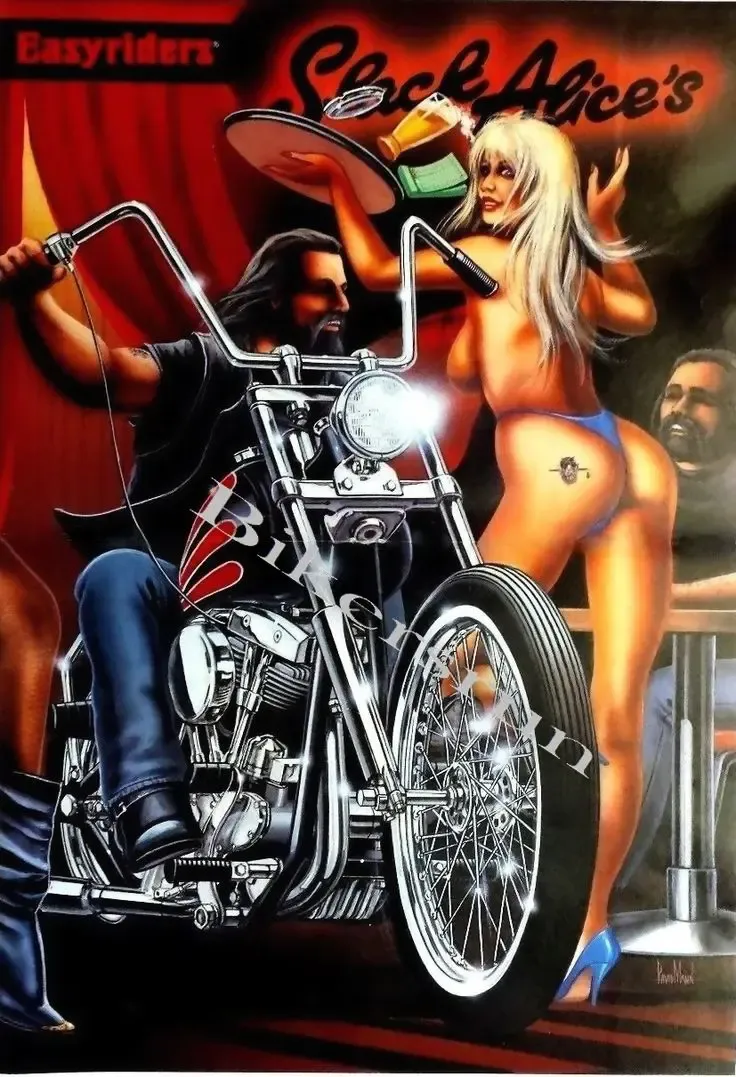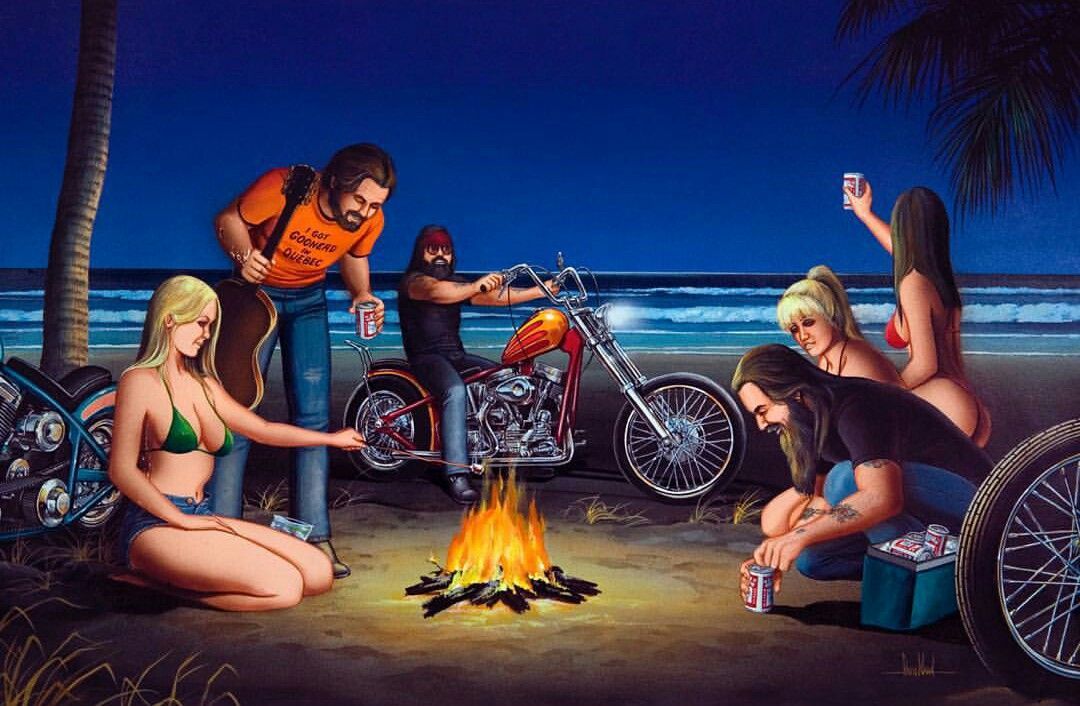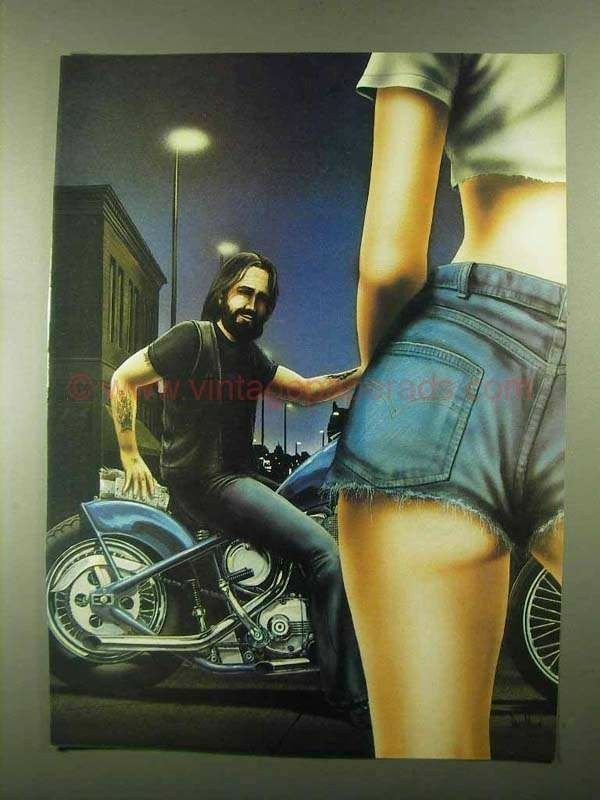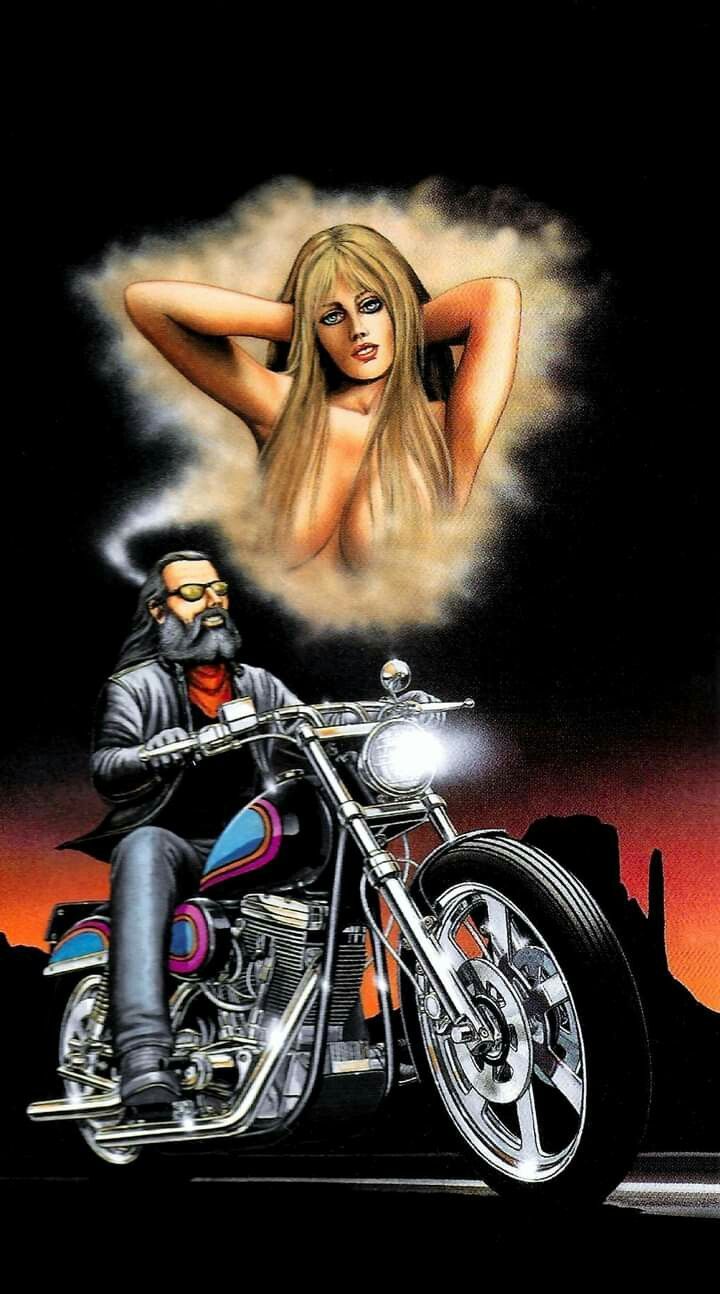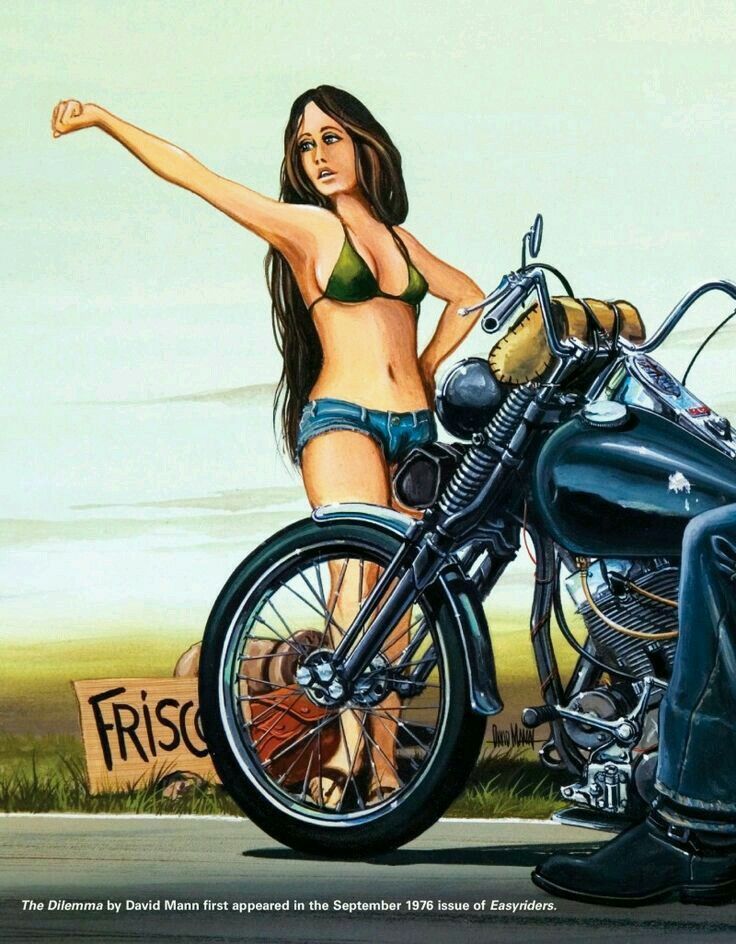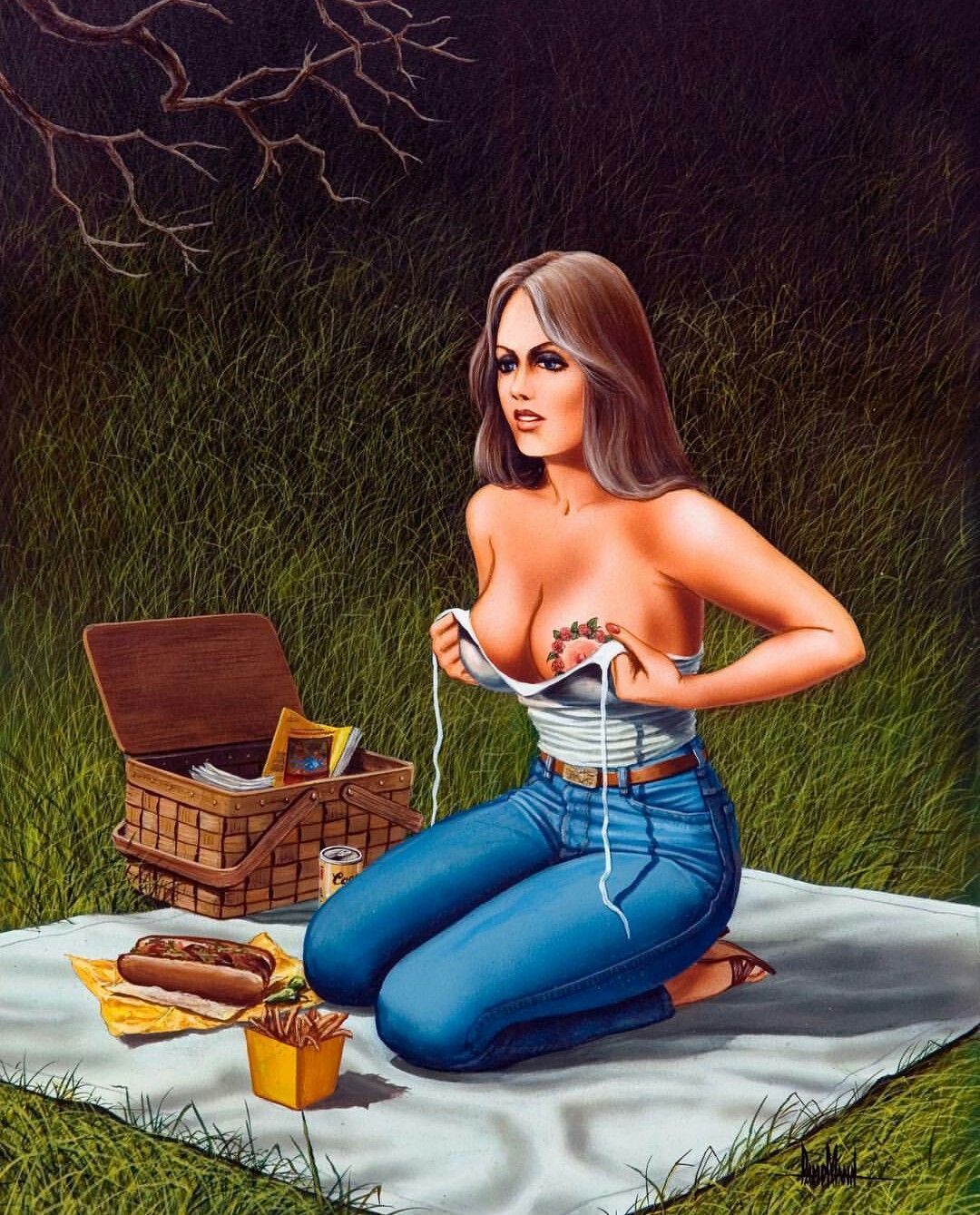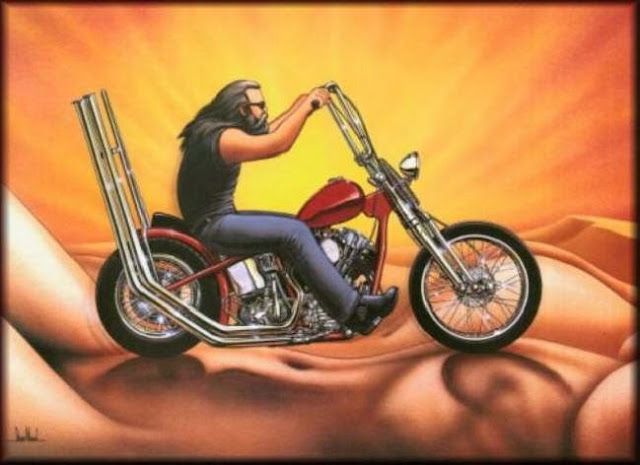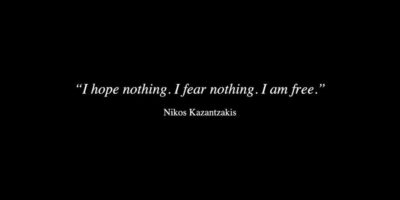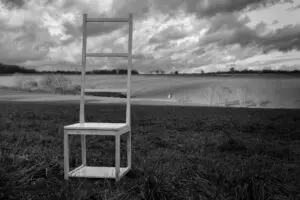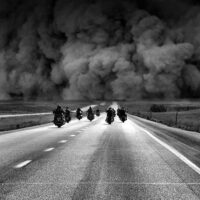David Mann, geboren 1940 in Kansas City, Missouri, gilt als einer der einflussreichsten Künstler in der Welt der Biker und Chopper-Kultur. Seine Werke fangen nicht nur das Bild des Motorradfahrers ein, sondern zelebrieren den rebellischen Geist und die Freiheit der Straße. Als autodidaktischer Künstler, der durch die amerikanische Custom-Motorrad-Szene berühmt wurde, hat Mann mit seinen Illustrationen und Gemälden eine ästhetische Identität geschaffen, die untrennbar mit dem Lebensstil der Biker verbunden ist.
Künstlerische Visionen
Eines der Hauptmotive in seinen Gemälden ist die endlose Straße, die sich durch karge Wüstenlandschaften oder weite, offene Felder schlängelt. Diese Straßen symbolisieren Freiheit, Selbstbestimmung und das Leben in Bewegung. In seinen Bildern sind die Maschinen und die Fahrer eins, vereint durch das gemeinsame Streben nach Unabhängigkeit und einem Leben fernab der Konventionen. Die „Chopper“, ein nach individuellen Vorstellungen umgebautes Motorrad, wird in Manns Kunst oft zum Symbol des Individualismus und der handwerklichen Kreativität.
Seine Arbeiten sind geprägt von einer Liebe zum Detail: die Chromteile der Motorräder glänzen unter der Sonne, Lederjacken und Bärte der Fahrer sind fein ausgearbeitet, und jedes Element der Bilder fügt sich nahtlos in seine Vision der Biker-Welt ein. Die Farben sind oft warm und intensiv, und das Lichtspiel in seinen Gemälden trägt zur mystischen Atmosphäre bei, die er in seinen Werken erschaffen wollte.
Manns Kunst ist mehr als nur die Darstellung von Motorrädern. Sie ist eine romantische, fast mythische Reflexion über Freiheit, Individualität und die Flucht vor den Zwängen des Alltags. Er sah die Biker-Welt als ein alternatives Universum, in dem Menschen, die sich außerhalb der gesellschaftlichen Normen bewegten, ihren eigenen Weg gingen. Diese Vision durchzog seine Arbeiten und war die treibende Kraft hinter seiner künstlerischen Tätigkeit.
Antrieb und Einfluss
David Mann war tief in der Biker-Szene verwurzelt und lebte selbst das Leben, das er malte. 1965 zog er nach Kalifornien, wo die Biker-Subkultur florierte und er Teil dieser lebendigen Gemeinschaft wurde. Hier fand er nicht nur Inspiration für seine Kunst, sondern auch die Gemeinschaft und Freiheit, die er suchte. Seine enge Verbindung zu den Menschen, die er porträtierte, verlieh seinen Werken eine Authentizität, die bei den Fans und Motorradfahrern auf große Resonanz stieß.
Mann schloss sich der „Chopper“-Bewegung an, die von handgefertigten, radikal veränderten Motorrädern geprägt war. Diese Maschinen waren nicht nur Fortbewegungsmittel, sondern Ausdrucksmittel, die dem Drang nach Freiheit und Kreativität entsprachen. Seine Illustrationen für das Magazin „Easyriders“, in dem seine Werke ab den 1970er Jahren regelmäßig erschienen, machten ihn über die Biker-Szene hinaus bekannt. Seine Illustrationen prägten das Magazin und entwickelten sich zum künstlerischen Rückgrat einer Subkultur, die sich über Jahrzehnte hinweg mit seinen Bildern identifizierte.
Ein zentrales Thema in Manns Arbeiten ist auch die Brüderlichkeit der Biker. In vielen seiner Werke sind nicht nur einsame Straßen, sondern auch Gruppen von Fahrern dargestellt, die gemeinsam unterwegs sind – vereint in ihrer Liebe zu ihren Maschinen und dem freien Lebensstil. Diese Solidarität, dieses ungeschriebene Gesetz der Loyalität unter Bikern, ist ein wichtiges Element seiner Werke. Es geht nicht nur um den Einzelnen und seine Maschine, sondern um eine Gemeinschaft von Gleichgesinnten, die sich in ihrer Andersartigkeit verbunden fühlen.
Vermächtnis und Einfluss auf die Biker-Kultur
David Mann hat mit seiner Kunst einen dauerhaften Einfluss auf die Biker- und Chopper-Szene hinterlassen. Seine Werke sind nicht nur Kunstwerke, sondern visuelle Manifestationen einer Lebensweise, die von Freiheit, Abenteuer und Rebellion geprägt ist. Für viele Biker sind seine Bilder zu Ikonen geworden, die den Geist ihrer Bewegung perfekt einfangen.
Was Mann besonders auszeichnet, ist sein unermüdlicher Drang, die Essenz des Biker-Lebens in all seiner Wildheit und Schönheit darzustellen. Seine künstlerische Vision war es, das Gefühl von grenzenloser Freiheit, das das Fahren eines Motorrads vermittelt, auf die Leinwand zu bringen. Er hat die Landschaften, die Maschinen und die Menschen mit einer Intensität dargestellt, die weit über die einfache Abbildung hinausgeht.
David Mann starb im Jahr 2004, aber seine Kunst lebt in der Biker-Subkultur weiter. Seine Gemälde sind heute nicht nur in Magazinen und Galerien zu finden, sondern auch auf Tattoos, Wandbildern und in den Werkstätten derer, die sein Werk lieben und verehren. Er ist zu einem Symbol für den ungezähmten, unabhängigen Geist geworden, der die Biker-Kultur ausmacht. Seine Bilder bleiben zeitlose Zeugnisse einer Vision von Freiheit, die weiterhin Generationen von Motorradfahrern und Freigeistern inspiriert.
Dieser Beitrag wurde mit Hilfe von KI verfasst
Who was the painter David Mann?
David Mann, born in 1940 in Kansas City, Missouri, is considered one of the most influential artists in the world of biker and chopper culture. His works not only capture the image of the motorcyclist, but also celebrate the rebellious spirit and freedom of the road. A self-taught artist who rose to fame through the American custom motorcycle scene, Mann’s illustrations and paintings have created an aesthetic identity that is inextricably linked to the biker lifestyle.
Artistic visions
Mann’s art is more than just the depiction of motorcycles. It is a romantic, almost mythical reflection on freedom, individuality and the escape from the constraints of everyday life. He saw the biker world as an alternative universe in which people who moved outside social norms went their own way. This vision permeated his work and was the driving force behind his artistic activity.
One of the main motifs in his paintings is the endless road that winds its way through barren desert landscapes or wide, open fields. These roads symbolize freedom, self-determination and life in motion. In his pictures, the machines and the riders are one, united by the common pursuit of independence and a life far removed from convention. In Mann’s art, the „chopper“, a motorcycle rebuilt according to individual ideas, often becomes a symbol of individualism and handcrafted creativity.
His works are characterized by a love of detail: the chrome parts of the motorcycles gleam under the sun, the riders‘ leather jackets and beards are finely crafted, and every element of the pictures fits seamlessly into his vision of the biker world. The colors are often warm and intense, and the play of light in his paintings contributes to the mystical atmosphere he wanted to create in his works.
Drive and influence
David Mann was deeply rooted in the biker scene and lived the life he painted. In 1965, he moved to California, where the biker subculture flourished and he became part of this vibrant community. Here he not only found inspiration for his art, but also the community and freedom he was looking for. His close connection to the people he portrayed lent his works an authenticity that resonated with fans and motorcyclists alike.
Mann joined the „chopper“ movement, which was characterized by hand-built, radically modified motorcycles. These machines were not just a means of transportation, but a means of expression that corresponded to the urge for freedom and creativity. His illustrations for the magazine „Easyriders“, in which his work appeared regularly from the 1970s onwards, made him famous beyond the biker scene. His illustrations shaped the magazine and became the artistic backbone of a subculture that identified with his images for decades.
A central theme in Mann’s work is also the brotherhood of bikers. Many of his works depict not only lonely roads, but also groups of riders on the road together – united in their love of their machines and the free lifestyle. This solidarity, this unwritten law of loyalty among bikers, is an important element of his works. It’s not just about the individual and their machine, but about a community of like-minded people who feel united in their differences.
Legacy and influence on biker culture
David Mann’s art has left a lasting impact on the biker and chopper scene. His works are not just works of art, but visual manifestations of a way of life characterized by freedom, adventure and rebellion. For many bikers, his pictures have become icons that perfectly capture the spirit of their movement.
What particularly sets Mann apart is his relentless drive to portray the essence of biker life in all its wildness and beauty. His artistic vision was to capture on canvas the feeling of boundless freedom that riding a motorcycle conveys. He portrayed the landscapes, the machines and the people with an intensity that goes far beyond simple depiction.
David Mann died in 2004, but his art lives on in the biker subculture. Today, his paintings can be found not only in magazines and galleries, but also on tattoos, murals and in the workshops of those who love and revere his work. He has become a symbol of the untamed, independent spirit that defines biker culture. His images remain timeless testaments to a vision of freedom that continues to inspire generations of motorcyclists and free spirits.
